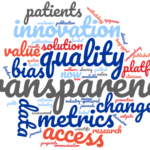The hallmarks of sound science are reproducibility and generalizability that have been subjected to scientific peer review. If any of these characteristics is missing, science is lost. It sounds very simple, but anomalies and deficiencies are everywhere.
Systematic studies from pharmaceutical companies such as Amgen and Bayer suggest 50–89% non-reproducibility of research results published in highly regarded scientific journals. Such studies should serve as wake-up calls for better reproducibility and more transparency in scientific investigations.
My recent book, titled Innovative research in life sciences: pathways to scientific impact, public health improvement, and economic progress, was developed based on the recognition that the analysis of best practices is one of the greatest learning opportunities about scientific productivity. Studying the skills, practices and work styles of researchers who have achieved superior scientific discoveries offers many extraordinary lessons.
There are innumerable ways to define the best. The following definitions of the best results or breakthroughs are particularly appealing:
- being the researcher behind a discovery that has profoundly improved public health
- receiving the Nobel Prize
- winning other selected major international scientific awards
- being the creator of a widely used and widely applicable landmark theory.
When we pick a definition of the best results, the practices leading to them can be identified and systematically studied. Reviewing the research practices of eminent achievers highlights many interesting lessons, especially when the same factor comes up again and again. Such practice style factors appear to be playing a key role in the successes of pioneering researchers.
Learning from the best of the best is one of the most effective ways of achieving great results. This is particularly important in an era in which there is a tendency to trivialize research by using the number of publications and the amount of grant funding received to measure productivity and quality. Lessons from systematic ‘research on research’ should help scientists who want to energize or reinvigorate their scholarly productivity.
Based on the practices of hundreds of award-winning and breakthrough innovators, the book crystallizes 12 important skills that appear to have played a key role in the progress of their scientific investigations. Interestingly, many of the skills involve the ability to partner with industry.
Openness and transparency of scientific studies is a precondition of successful reproducibility. Verifiable reproducibility is one of the most profound interests of industry as no one can develop a trusted product or service on non-reproducible results.
Therefore, mutually beneficial and ethical partnership between researchers and industry is one of the most effective ways to increase understanding, explore practical relevance and assure reproducibility of research in life sciences. These are some of the reasons why our laboratory supports the Open Pharma position statement on open access and hopes that many others will join the effort.






